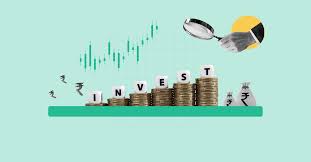Navigating Yield and Duration Dynamics in High-Yield Bond Investing
High-yield bonds, often referred to as junk bonds, can be an enticing investment option due to their potential for higher returns compared to investment-grade bonds. However, investing in high-yield bonds requires careful consideration of several key factors to manage risks effectively and make informed investment decisions. Let’s delve into upmarket.co which is the essential considerations for investors venturing into the realm of high-yield bonds or junk bonds.
One crucial consideration is credit risk assessment. High-yield bonds are issued by companies with lower credit ratings, indicating a higher risk of default compared to investment-grade bonds. Investors must conduct thorough credit analysis to evaluate the financial health, debt levels, cash flow, profitability, and creditworthiness of the issuing companies. Assessing credit risk helps investors gauge the likelihood of timely interest payments and principal repayment, mitigating potential losses from default events.
Another important factor to consider is industry and sector exposure. High-yield bonds are often issued by companies in sectors such as telecommunications, energy, healthcare, or technology, which may exhibit higher volatility and sensitivity to economic conditions. Understanding the specific industry dynamics, regulatory environments, competitive landscapes, and market trends can provide valuable insights into the risk-return profile of high-yield bond investments within different sectors.

Furthermore, liquidity considerations are paramount when investing in high-yield bonds. These bonds may have lower liquidity compared to investment-grade bonds, meaning they may be less actively traded in the secondary market. Investors should assess liquidity risk, evaluate trading volumes, bid-ask spreads, and market depth to ensure sufficient liquidity for buying or selling high-yield bonds when needed without significant price impact.
Yield and duration dynamics play a significant role in high-yield bond investing and require careful attention from investors. High-yield bonds typically offer higher coupon rates or yields to compensate investors for the increased credit risk. However, higher yields also come with longer durations, meaning these bonds may be more sensitive to interest rate changes and market fluctuations.
Investors should assess the yield-to-maturity (YTM), current yield, yield spread over comparable Treasuries, and yield curve positioning when evaluating high-yield bond opportunities. Understanding yield dynamics helps investors compare relative value, assess income potential, and manage interest rate risk within their portfolios.
Additionally, duration analysis is critical in high-yield bond investing to gauge price sensitivity to interest rate movements. Longer-duration high-yield bonds may experience greater price fluctuations in response to changes in interest rates, impacting bond prices and total returns. Investors should align duration exposure with their risk tolerance, investment horizon, and interest rate outlook to optimize risk-adjusted returns and portfolio performance.
